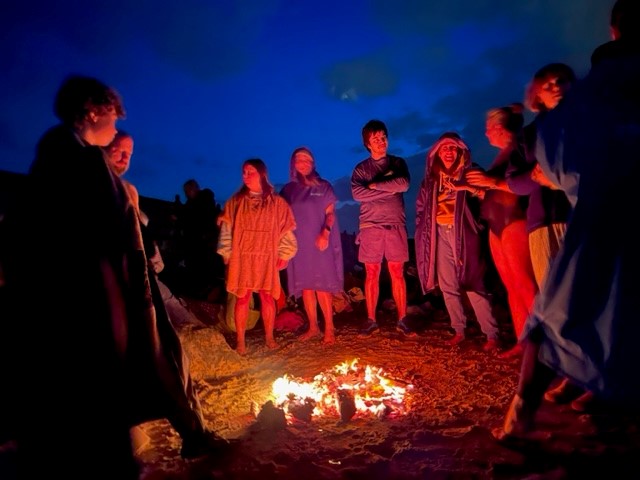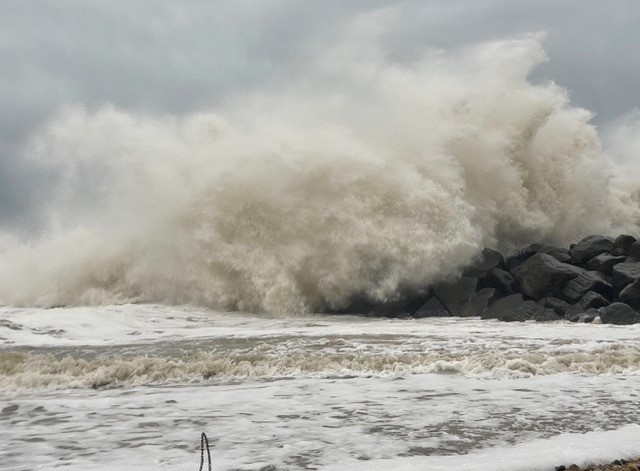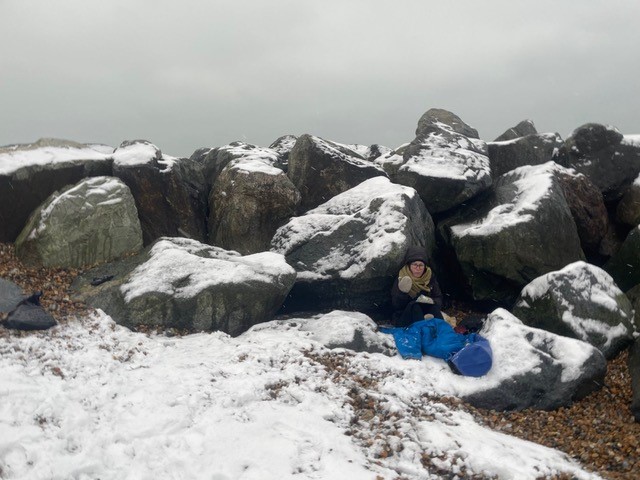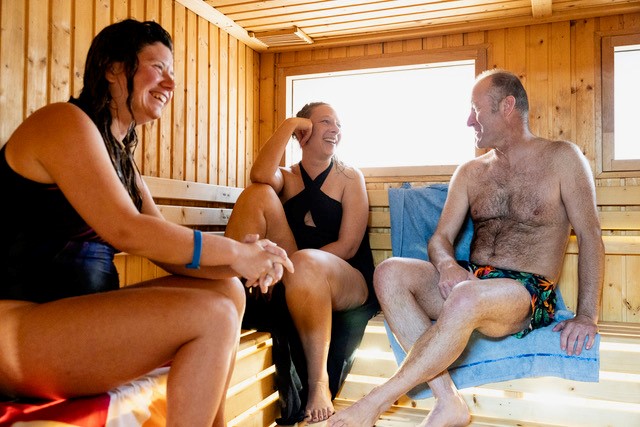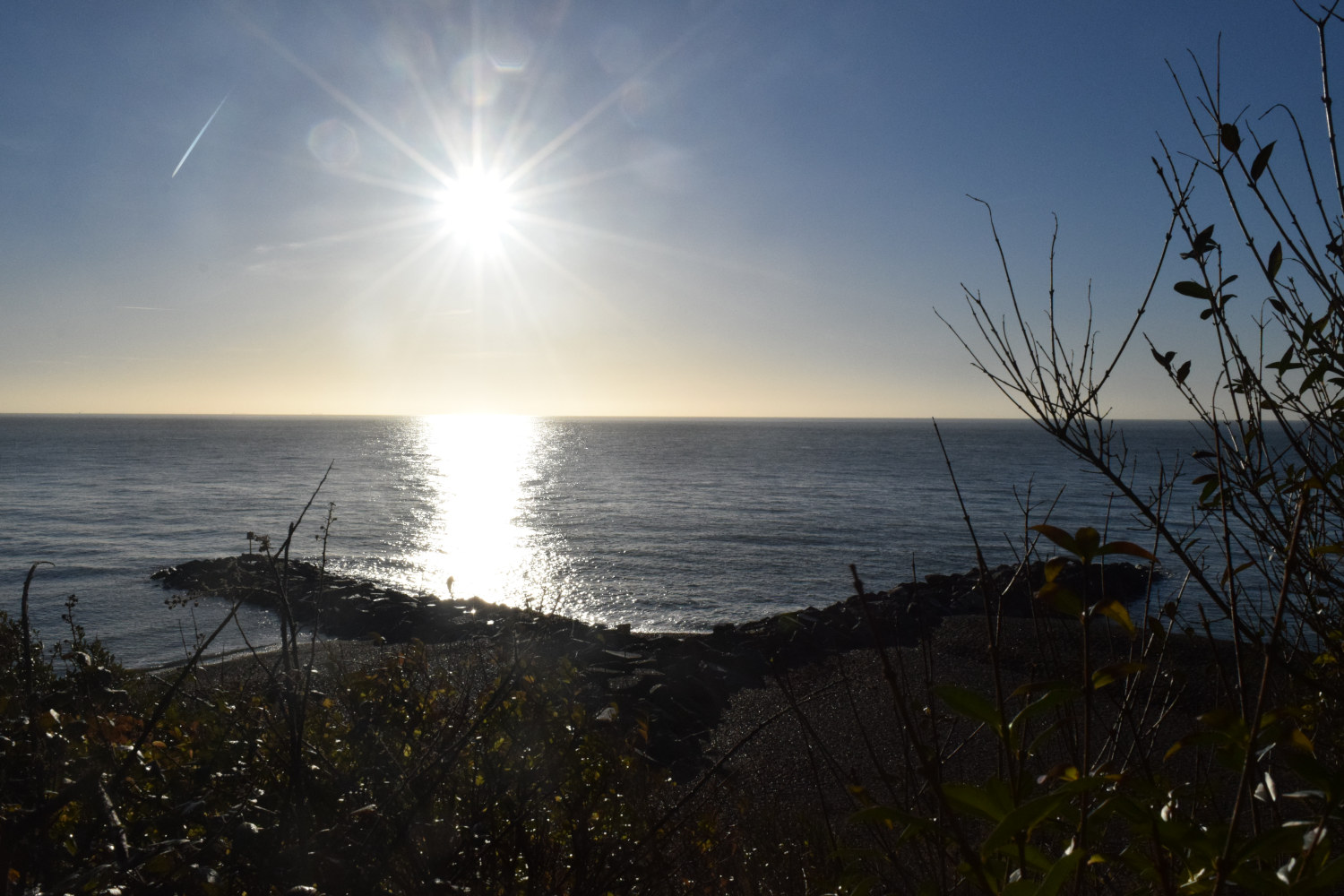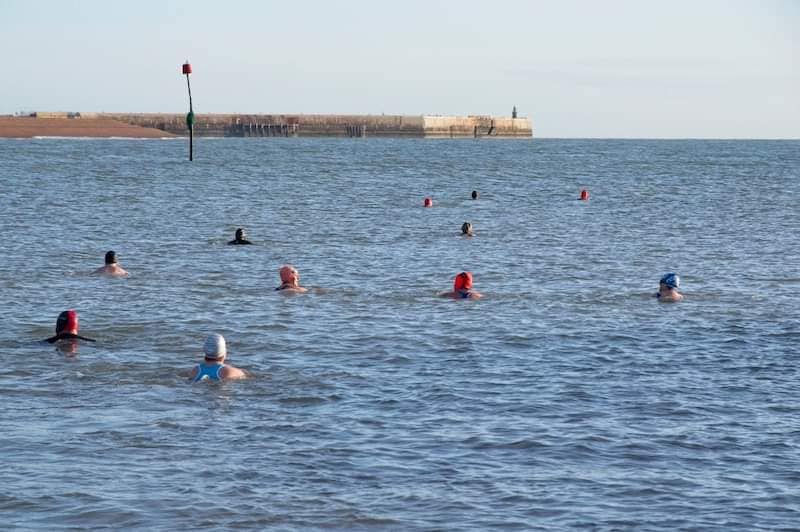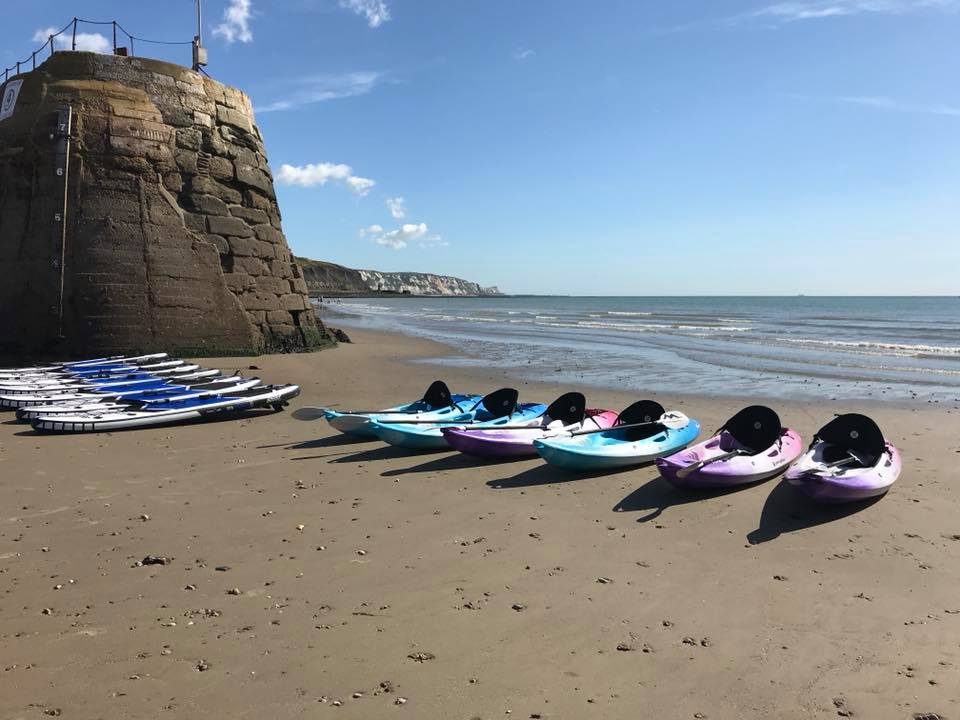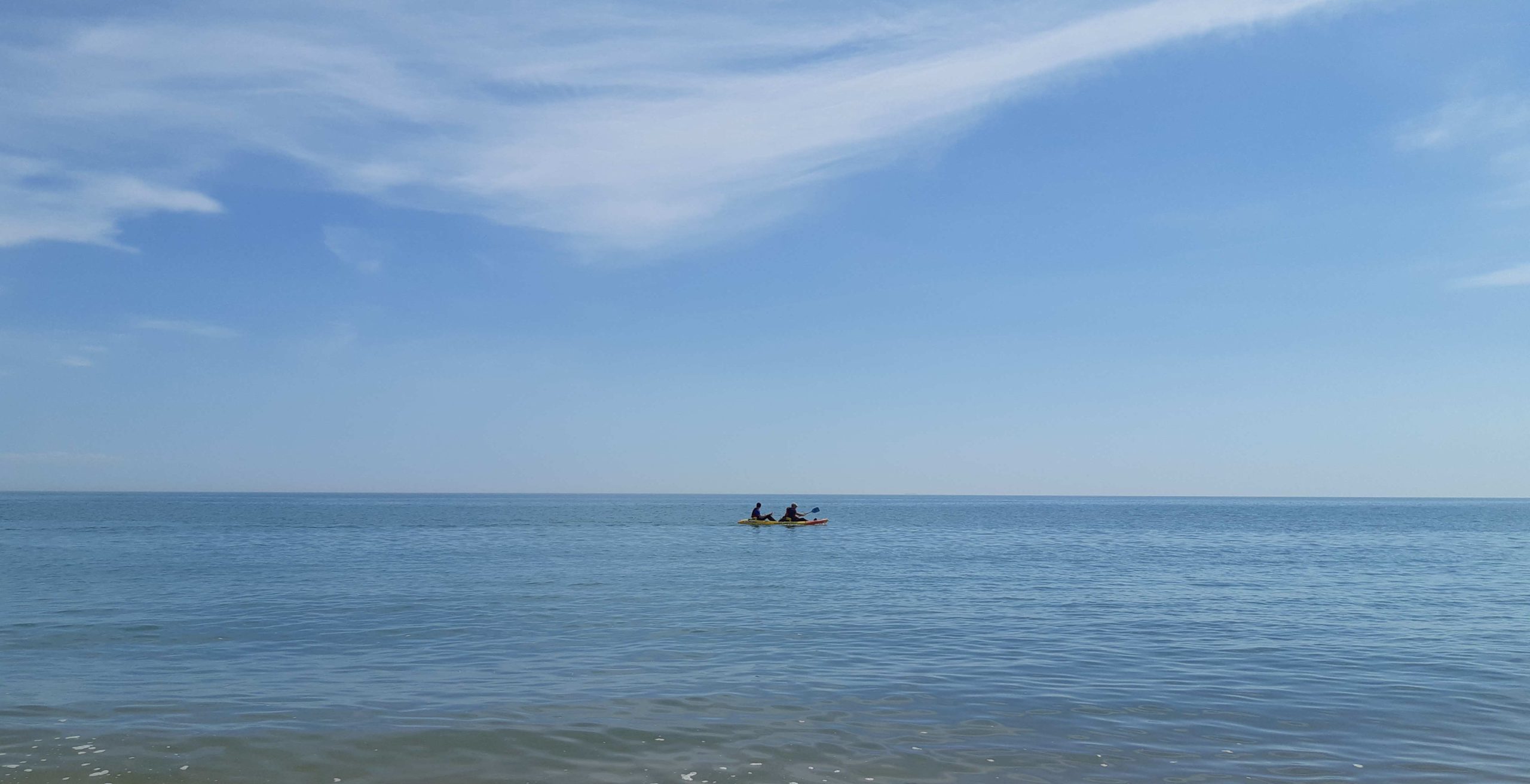Sport & Recreation
sea swimming with Kirsty Hogben
Kirsty Hogben has lived in Folkestone all her life and grown up around the sea. In the summer of 2019, after suffering an injury that meant running marathons was out, she started swimming in the sea. Kirsty challenged herself to swim for 100 days without a break. Then as the weather got colder, she decided to extend the challenge. After over 1500 days of continuous sea swimming she has become a source of extensive local knowledge when swimming around Folkestone. Kirsty is a qualified open-water swimming coach, running sessions to help people improve their technique, or get used to the water. Folkelife sat on the rocks in Mermaid Bay to find out what it’s like to swim around Folkestone.
“The challenge I set myself was something I really enjoyed doing. I used to run marathons, so I was pretty fit, but I tore my ankle ligament and needed an activity that wasn’t going to aggravate that. When winter came I’d met these lovely people who swim here throughout the year, so I decided to continue. Into 2020 and we all know what happened then, but with the pandemic there was an influx of people wanting to keep fit, and this was the perfect sport.”
kidnapped by gorillas
“I continued throughout 2020 and onwards for another year or so until I’d been swimming for over 1500 days. I’m training to be a counsellor, and part of that training is that I have counselling too. My counsellor and I discussed my swimming and it became clear that the continuous streak was probably not healthy. I was quite obsessed with it by this point! So I decided it was time to break the run.
“My friends colluded together to ‘kidnap’ me one day. It was quite funny, they were dressed as gorillas and had a big van and bundled me in! I didn’t realise just how much it would affect me though. In retrospect, I should have taken a break at day 1000, on my own terms and just been sensible. But instead I was really upset that I had broken the streak. Now though, I’m ok, I don’t have to rush down at 5am in order to get my swim in, if work isn’t going to allow me to go later. I can be relaxed about missing a day, and still know that I can swim tomorrow. I do actually come down almost every day, but it’s because I want to, not because I have to.”
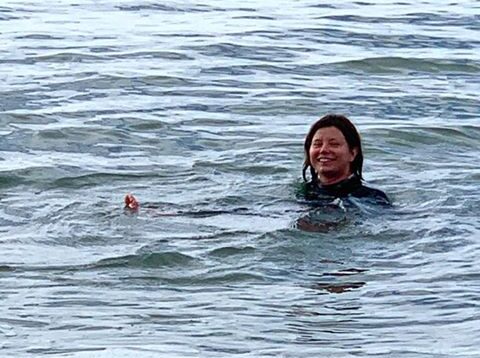
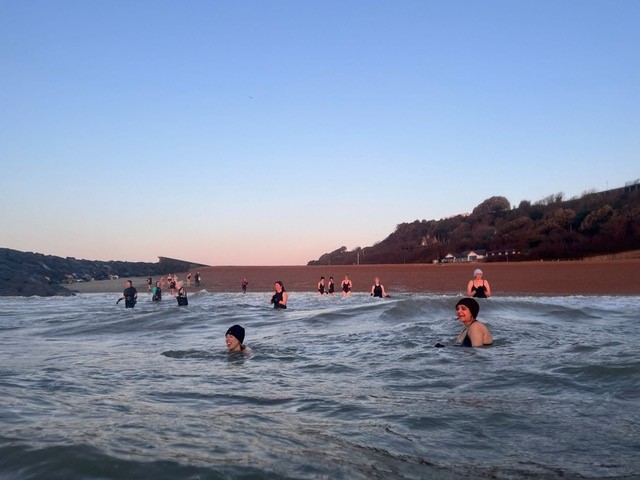
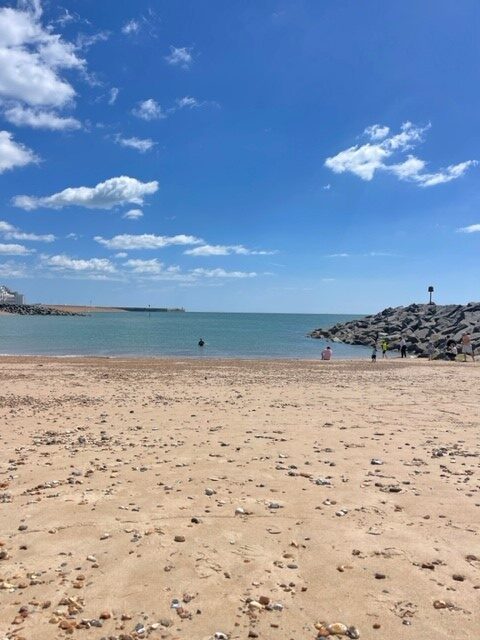
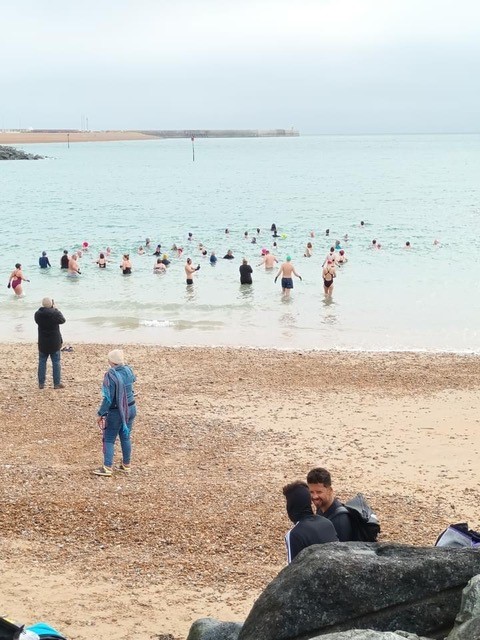
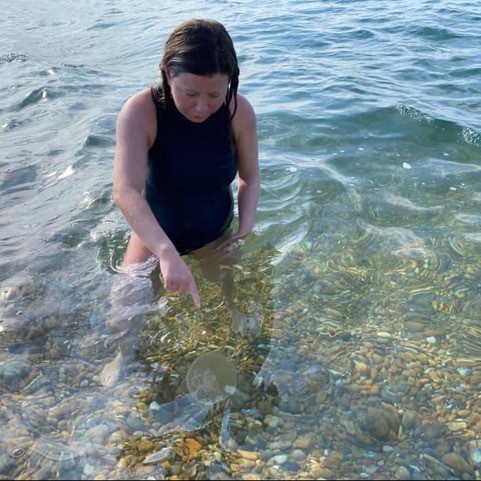

mermaid bay
“There are lots of places to swim around Folkestone; Sunny Sands, The Warren, Sandgate Beach and so on, but the best place is Mermaid Bay. We’re just below the Leas Cliff Hall and it’s where the groynes are shaped like a mermaid’s tail. This is a good place because there is usually someone else here swimming, so if you’re on your own, you will find someone here. It’s also good because of the sheltered area. These groynes, particularly the ones on the west side, protect you and the bay from the wind.
“When the tide is high, you can swim right inside the bay. There’s what I call the Triangle Of Safety here. From the west-side rocks we’re on, you can see the post at the end of the east-side groynes, then you make a triangle to the lamppost on the walkway under the cliffs and back to us. That’s how I managed to swim here on a daily basis, because this is a sheltered place to swim, even in winter.”
currents and waves
“Sunny Sands can get quite choppy, and the waves quite high. You also need to consider the currents and waves, as well as the tide, when you’re swimming. The currents move east and west, and the currents here in the bay are less strong than out beyond. There are dumping waves – you may have seen these along the beach at Sandgate. The sea lifts up the water and dumps it on the shoreline. We don’t get dumping waves as much here in Mermaid Bay.
“There are neap tides and spring tides. We’re currently in a neap tide week which means the tides are not extreme. Spring tides are when you get really high and really low tides. You can get a 0.4m low tide which means you can walk to the post at the end of the groyne and the water will be just at your ankles. There’s a little reef beyond the groynes which you can see at really low tide. If the water is clear you can see crabs walking along it which is rather cool.
“I would say that if it’s a spring tide, and you want to swim at low tide, then that wouldn’t be such a good idea. There won’t be any water in the bay so you will have to go beyond the groynes. You are exposed to the currents at this point. I’d wait until there’s an incoming tide, because if you do get into difficulty you will be pushed back to shore. If you get into difficulty on an outgoing tide then it’s going to pull you further out to sea.”
rip tides
“We don’t have very strong rip tides here around Mermaid Bay but you do have to be careful once you go beyond the groynes. We’ve had to call out the coastguard for people getting pulled behind the western groynes and not being able to get back. If you were to swim around the end of the Harbour Arm then you would find some stronger rip tides there. I’ve also seen them at the Metropole Steps, and in the area in front of the Imperial Hotel in Hythe.
“It’s important to know what to do if you find yourself in a position where the you are caught up in a current that’s taking you out to sea. Stop and think, and swim across the current, parallel to the shore. A rip tide is a channel of water that’s taking you out to sea, so in this case takes you south. I got caught in one in the second week I was swimming, and I knew what to do because I follow the RNLI, but I was being taken out to France and started to panic.
“All I had to do was to swim 5 or 6 strokes in line with the shore and I was out of the rip. It was scary, but if you know what to do you’re ok. What we have here is nothing to what you see going on in Cornwall or abroad though. You can be an Olympic swimmer and still not be able to get out of it.”
look at the water
“You can tell a lot about what’s going on by looking at the water. With a rip tide you can see the direction of the water change; you can see swirls and eddies and the ripples going in different directions. Always take a look at the water to know what’s happening around you. Watch the patterns of the waves too. Even on a calm day you get waves which come in say 3 to 5 weak ones and then a stronger one.
“Once you are in the water, always know your exit point. This might seem obvious, and you’ll want to get out where your clothes are, but if you panic, then your logical brain gets left behind. You get emotional and this can get you into difficulties. Calm yourself down. You can lay on your back in a starfish position which is really good for calming down and focusing on what you can control. When the tide is coming in, the current is flowing eastwards; when the tide is going out, it’s flowing westwards. That’s the basics. There is more to it than that, and there’s a lag as the tide turns, but those are the basics.”
controlled by the moon
“We do long swims where we start from Sandgate and come to Folkestone. It’s about a mile. On a neap tide you can swim here in about 32 minutes. On a strong spring tide it only takes 26 minutes. You can feel the power of the moon on the water when you’re swimming. It’s primal in a way, taking you back to when we were more in tune with how the land and sea works. It’s lovely to swim here on a full moon night too and experience that power of the moon on the waves. There’s a Facebook group and we post on there when and where we’re going to meet. This is usually when we get to meet new people. We have a fire, and swim. Some people only go in up to their knees but others do a full swim.
“All your senses are different though when you swim at these times. You can feel the texture of the water, and hear it too. It’s a community event. Sometimes we have 10 people, sometimes it’s 60.”
trust your gut
“The main thing I would say if you’re going to go out is take a look at the conditions and trust your gut. If your insides are saying ‘no way’ then don’t go! You can always come back another time. There are wind and tide apps which are good, and take a look at these first. If the wind is building, then don’t go out, because you don’t want to go into something you can’t get out of. Obviously don’t swim in thunderstorms, and if there’s a fog, that’s not too sensible either. If you can’t see the shore, then no one can see you out there. It makes sense!
“It’s also not a good idea to go out for 48 hours after a big rain storm. The sewage will be high then. It’s a lot better than it was, but that just shows how grim it used to be. There are apps for this too.”
Temperature
“I guess people are mainly worried about the temperature. On a warm sunny day, when the sea is calm then going in is wonderful. The sea temperature here gets to around 17 or 18 degrees at its height. September is the warmest sea temperature month, and then it starts to drop off. I find the hardest time to push through is that run up to December because the temperature is dropping quite quickly. It will be colder in March, but if you can get through the drop here then you’ll acclimatise and survive the coldest time. I have been swimming here in the snow which was quite mad!
“Gloves, hats and boots help keep you warm. What you don’t want happening is your extremities to get cold. You also don’t want to stay in so long that you start shaking. Know that if you’re cold, once you get out your body still keeps loosing temperature, so you’re not at your coldest. It’s called the after-drop, and your body continues to drop for at least 15 to 20 minutes after getting out. This is where people make mistakes. They think they’re not cold, so stay in longer, and that can get you into trouble. Once you’ve been in, get out and get out of your wet clothes. Put something dry on, and drink a warm drink. We bring flasks down, as that’s the easiest way to warm up, from the inside out.”
Sauna
“The sauna at Folkestone Rowing Club makes winter swims so much nicer. You can go in the water and then warm up in the sauna. Also, you can get changed in a warm and dry place – so much nicer than doing it on the beach! But, that means that you swim in the more unsheltered area in Sandgate rather than here at Mermaid. I tend to mix it up so I can swim here and there, and don’t use the sauna every time.
“What’s been good though is meeting the community of swimmers here. There are so many different people and everyone will look out for you. If the tide is coming in and is going to reach someone’s belongings, you’ll find they get moved to safety if you’re out in the water.”
coaching
“In 2021 I trained as an open water swimming coach and this is fun. I had a channel swimmer the other day who wanted to get used to swimming around jelly fish. We do get jelly fish here and they’re not very dangerous. Once you get used to them you can work your way around them.
“Others want to practice their stroke; breaststroke is always good, but if you’re looking for speed then front crawl is what you need. I go through the sea theory and talk about tides and current. Generally people just need their fears putting at ease. Once you’ve been in and talked about the issues that can arise, people are happy to keep coming and join our community.”
Folkestone Sea Sauna Photo Credit: Igor Emmerich

